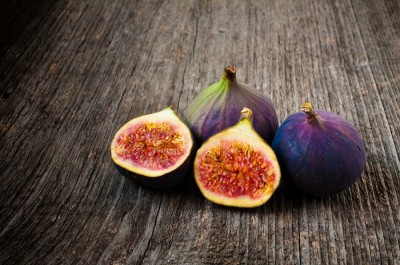Are you looking for something new for your gardening tastes? Why not try figs? Figs are well-known as being easy to grow indoors. They only take one or two years to mature and fruit, which is great for those gardeners who don’t feel like tending a plant for years before they get to taste their hard work. There are many varieties, and most figs are simple to grow and care for, but the most common indoor fig is the Negro Largo.
You will not only get fruit, but also have a lovely, decorative plant to enhance your home. It’s perfect for a little exotic or tropical touch during the long months of winter.
The leaves are dark green, oblong, and are two to five inches long. There is a healthy single trunk, with a full canopy and the tree itself can grow up to 18 feet tall but you won’t want that size in your home. This is where you will need to prune the tree to control its size. Besides pruning, you can also keep the pot size small, as this will help control tree size. Let’s start at the beginning.
How to Grow Your Figs Indoors
Starting figs from seeds can be done with care and patience. For first-time growers, or those who want a head start, select a tree from your local nursery or greenhouse. Once you find your tree, bring it home and follow the instructions below.
- Choose a planter and make sure there are holes for drainage in the bottom. Remember to add about two inches of soil.
- Remove the fig tree from its small pot and remove all the clumps of dirt by hand. Place it in the new pot and fill the rest with dirt.
- Water the fig plant until water comes out the draining holes, but don’t allow the fig to sit in the extra water. You will need to regularly water your fig tree, at least once a week.
- Prune your tree when it reaches the size you want. You will also be able to shape the tree to your own style.
- It is recommended to fertilize your fig tree once a month in the spring and summer, and once every two months in the autumn and winter.
Note: If you notice a sticky substance on the fig’s leaves and branches, there is probably an infestation of insects. The common pests for figs are spider mites and mealy bugs. They will blend in with the bark and be hard to see, so take a cotton swab and soak it in alcohol, then wipe down the branches of the fig tree. You can also treat with neem oil.
Caring for Your Fig Tree
You can use a variety of pots or containers; figs don’t seem to mind. There are wood, ceramic and clay variations. Try to avoid very heavy pots, because they are only going to get heavier with the dirt, tree and water. Mulch can be added on top of the soil to help keep it moist. Soil needs to be a light type, and not too rich. A mix of compost, builder’s sand and vermiculite will be good for drainage.
Get The Best Deals On Non-GMO Heirloom Seeds Right Here! [2]
Figs like sunlight and warmth, so the plant needs to be put in a warm, sunny place. It is not recommended to place the tree in direct sunlight, though, as this can cause leaf loss or scalding. Yes, it is true that you can have too much of a good thing!
If your fig tree does experience “leaf drop,” it means the tree is under stress. This stress can be from:
- pests
- drafts
- temperature changes
- not enough light
- too much water, or too little
- low humidity
- repotting
Temperatures should be above 60 degrees Fahrenheit or 16 Celsius. Keep figs away from drafts, as cold drafts will hurt the fig trees.
Re-pot the fig tree when its roots fill the pot. You will need to increase the size of the container as the tree grows. Be gentle, because fig trees don’t seem to like being moved often.
You won’t always have to prune your tree. It tends to do well after initial pruning and seems to be at its best at six to eight feet tall.
Your indoor fig tree will add character to your home, and the green leaves and tasty fruit will be a constant reminder of warmer days. By gathering a little bit of knowledge, and the right amount of care, you will be successful in bringing a new little fig tree to fruit.
What advice would you add on raising a fig tree? Share it in the section below:
Every Year Gardeners Make This Avoidable Mistake — But You Don’t Have To. Read More Here. [4]

